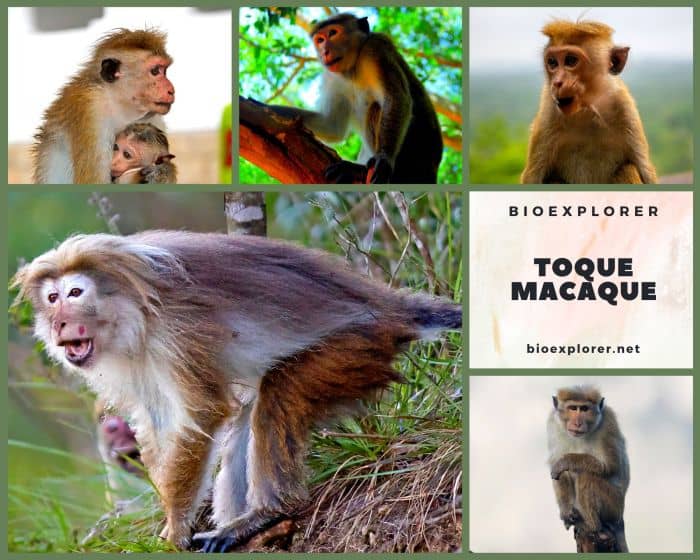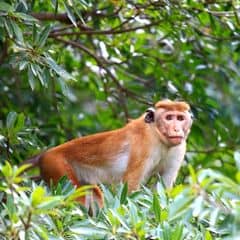
The toque macaque[1] (Macaca sinica) is a red-brown Old World monkey endemic to Sri Lanka, known as the rilewa or rilawa.
- The fur that covers the upper part of toque macaques varies in color depending on the subspecies.
- Coloration generally ranges from golden or orange-brown to yellowish or olive. Their furry undersides are white, and tufts of white fur protrude from the monkeys’ large, scalloped, prominent black ears.
- The long tail is dark above and pale white below. An elongated, hairless muzzle gives way to a prominent chin; the narrow lips are black.
- With age, the female species’ face becomes pink (hues range from pale to light, almost red). This pink coloration is particularly evident in the dry-zone toque macaques.
- The males have dull brown, hairless faces. One of the toque macaques’ most distinctive features (if not the most striking) is their scruffy, unkempt hairstyle.
- Nature has created a blatant hair tangle on every monkey’s head. As a result, this decorative lace has been likened to a brimless cap (referred to as a “toque“).
- Like their fur, the coloration and exaggeration of their spiral hairdo differ depending on the subspecies and region in which these monkeys live.





















